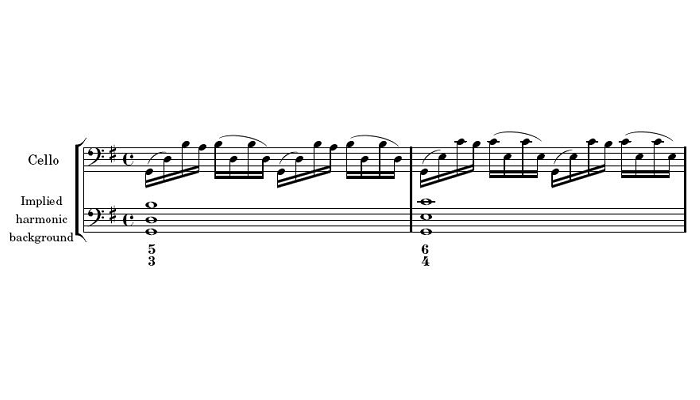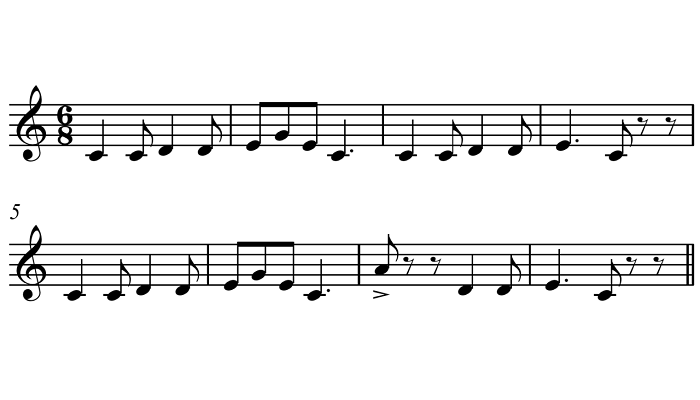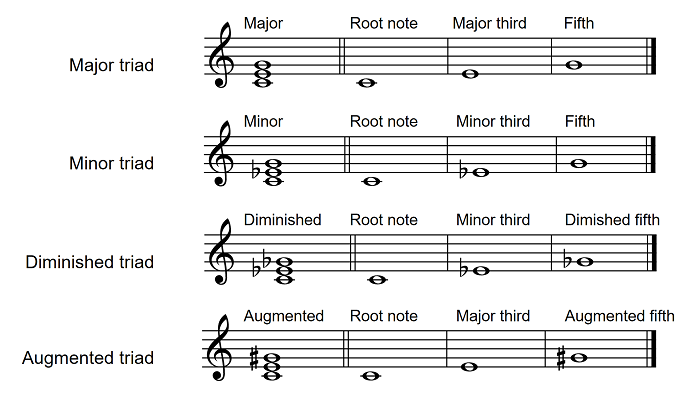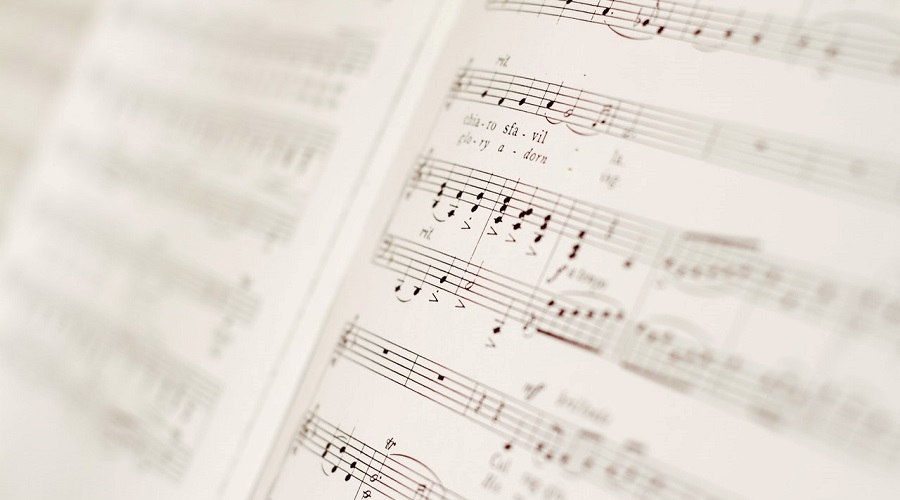Anyone can learn how to talk in English, but only those who know about grammar and its rules can write and apply what they learn.
Anyone can dance to tango music, but only those who learn the basics can dance as Al Pacino did in Scent of a Woman.
Likewise, anyone can learn how to play music, but only those who learn about music theory completely understand what they’re doing. If you don’t know what I’m talking about, follow this article!
What Is Music Theory?
Music theory is the basics of music. It covers all rules, ideas, and practices associated with music.
In other words, it’s the explanation of music. If you want to understand how a specific piece of music feels that way or expresses a particular emotion, you have to learn about music theory.
It’s not a series of rules you read, but it’s instead a collection of musical elements that help you better understand how music works.
Learning about music theory is a bit like learning about a language’s rules. You can speak a language, but you won’t be good at it unless you understand its rules and grammar. That’s how it is with music.
Music theory includes everything to learn about music, including key signatures, pitches, modes, tensions, notations, scales, and time signatures. You can think of it as the study of fundamentals of music and the analysis of different sounds and how they’re created.
The Three Pillars of Music Theory: Harmony, Melody, and Rhythm
Music theory primarily consists of three pillars that you can’t compose music about: harmony, melody, and rhythm. No song is ever made without these three. Here’s an overview of each of them and how they fall into music theory.
Harmony

Harmony is the movement of musical notes together to produce one unified sound. Be it musical notes or human voices, harmony is the movement of musical elements together in one loop, complementing each other and making the sound you want. It consists primarily of chords and chord progressions.
There are two main types of harmonies: consonant and dissonant tones.
Consonant harmonies are pleasing to your ear, and their notes play together in a perfect setting to produce a well-balanced sound. In addition, they have smooth transitions that sound natural to your ear as well.
Unisons, perfect fourths, and octaves are examples of consonant harmonies. On the other hand, seconds and sevenths, minor and major, are examples of dissonant harmonies.
Dissonant harmonies don’t sound very harmonic. They produce sounds that aren’t exactly pleasing to your ear, and they make you feel as if something is odd. They’re disconnected if you get what I mean.
Consonant harmonies are usually described as stable, while dissonant harmonies should deliver a tensioned feeling. Both harmonies are used interchangeably in music to convey different emotions.
Melody
Melody is the organized succession of musical notes in a single piece. It’s the study of notes in different pitches, while rhythm studies musical beats concerning time. Rhythm is actually one of the main elements of creating a melody.
In music studies, the melody is often described as a linear sequence of notes that are meant to sound like a single piece.

Musicians often create their compositions of multiple different melodies, with each melody consisting of two or more notes.
All melodies consist of two main elements: the rhythm and the pitch. The rhythm refers to how long each pitch lasts.
It’s the study of time in any melody, and it gets divided into different beats to deliver the sound. A rhythm may compose of quarter notes, half notes, whole notes, etc.
Meanwhile, the pitch refers to how high or low a note is. It’s determined by counting the vibrations that an instrument emits. When you create a series of pitches in a specific duration, you create a melody.
Understanding Disjunct and Conjunct Motion
Melodies are either created in a disjunct or conjunct motion. A disjunct movement happens when you leave significant interval gaps between the notes when composing. Meanwhile, a conjunct motion occurs when the notes are only half steps away, which means there aren’t large gaps between them.
If you don’t understand, let me give you an example. If you see how Ode to Joy is played on the piano, you’ll find that the player mostly clicks on keys next to each other.
That’s because the notes only move half steps throughout the piece. That also means it’s easy to play because the piano player’s hands won’t move around the keys much.
An example of disjunct motion is the Star-Spangled Banner. See how the piano keys move, and you’ll find that there are large gaps between the notes—at least whole steps. That’s why the player’s fingers move away from each other constantly.
As you probably realize, disjunct melodies are harder to play and sing.
Rhythm

Rhythm is a stretchy word that describes the movement of musical notes with regard to time. You may also think of it as the sequence of weak and strong notes and the pattern of voices and their repetitions throughout a piece or a song.
You can create your rhythm with any instrument, whether it’s a guitar, piano, or even a set of drums.
Any rhythm composes of some essential elements; here’s a brief definition of each:
- Tempo/Beats per minute: The speed of your musical piece, indicated in the number of beats per minute.
- Beat: The building blocks of music; they’re the repeated pulses in any musical pattern.
- Time signature: Refers to the number of beats in each measure.
- Meter: A pattern or sequence of strong and weak beats
- Accents: The emphasis you put on notes.
- Syncopation: The emphasis on the offbeats.
- Strong and weak moments: They refer to the offbeats and downbeats.
Why Should You Learn Music Theory?
The term ‘music theory’ can be a bit too broad for your liking. It’s a stretchy word if you ask me.
I mean, a theory can include virtually anything. So, music theory can consist of everything there is to know about music.
Keys, notations, chords, rhythm, tempo, and beats. I can go on and on, and I’ll still not cover everything.
Despite that, some musicians still refuse to learn about it. They can make music without it, and it sounds good. So why bother?

Well, if Beethoven didn’t bother with music theory, he wouldn’t have been able to convey his thoughts and emotions through his music as he did.
The 5th symphony sounds powerful at the start and then goes onto a cheery, optimistic tone because Beethoven intended it that way. The 7th symphony gives off a dancey feeling because that’s what Beethoven was trying to convey.
You wouldn’t be able to get your message across through music if you don’t know its basics because you wouldn’t know how to use every aspect to your advantage.
You’re not obligated to learn music theory, but you should if you want to go far in music. Here are other benefits you’ll gain from learning it:
- You’ll understand how musical notations work and how they’re played.
- You’ll be able to correctly create chord progressions.
- You’ll realize how musical pieces you listen to were created.
- You’ll be able to express different emotions through your music.
- You’ll discover new possibilities for your music.
- You’ll develop critical listening skills.
- You’ll be able to change the variables and try out new sounds constantly.
Learning Music Theory: The Musical Rudiments
Do you want to learn about music theory but don’t know where to start? I’ll answer all the questions you have.
To learn about music theory, you begin with the rudiments, which are the basics of music. Here’s a sequence you can follow in learning music theory.
The Rudiments

To put it in the simplest way possible, musical rudiments are the essential elements of music. They’re the building blocks, including the notes, how to play them, and how to apply them to create a rhythm.
So, you can think of rudiments as the alphabets of music. You first learn the letters, and then you know how to put them into words and sentences. It’s the same with rudiments.
There are four main musical rudiments: keys, chords, scales, and notations. You’ll need to learn about each of them individually if you want to gain complete insight into music theory.
Here’s a brief introduction to each of them.
Keys
In music, the key is a pattern of pitches in a composition. Keys are the building blocks of major and minor scales, and they make up the song’s harmony.
You may mix up keys and key signatures. To make matters simpler for you, key signatures are the visual symbols that illustrate the key of this musical section. You determine the key signatures using sharps and flats, which are, in other words, accidentals.
Musicians write the key signatures on notations to tell players what they should play next. In turn, players determine the key of the music they’re playing by the number of accidentals they see on their notes.
Chords

Chords are the building blocks of harmony. Any harmony consists of a series of chords and chord progressions. To create a chord, you put three or more single pitches together in a sequence.
You can create a chord using any combination of the twelve notes. Generally, there are four main types of musical chords: Major, Minor, augmented, and diminished.
Major chords have major thirds and perfect fifths of the major scale. Meanwhile, minor chords consist of firsts, flattened thirds, and fifths of the major scale.
Augmented chords have minor thirds and augmented fifths, while diminished chords consist of minor thirds and diminished fifths.
Scales
Like chords are the basic units of harmonies, scales are the basic units of melodies. A scale consists of a sequence of notes arranged in a pattern that consists of tones and semitones.
The scale’s sound will come out according to how these tones are set. Some scales are meant to sound emotional, and others are intended to be powerful.
When learning music theory, you should know about the major and minor scales. The major scale goes like this: tone, tone, semitone, tone, tone, tone, semitone. Meanwhile, minor scales go like this: tone, semitone, tone, tone, semitone, tone, tone.
When you know your way around music, you can learn about other advanced scales. But to understand them, you need to first understand the scale degree,
Scale Degree

The scale degree is basically its function. There are seven scale degrees numbered to indicate their positions on the musical scale. Here are they:
- First: tonic
- Second: supertonic
- Third: mediant
- Fourth: subdominant
- Fifth: dominant
- Sixth: submediant
- Seventh: leading tone
The scale degrees describe how much tension the music creates. All music notes create tension, then release it. The scale degree refers to just that, so you know where you should place your notes to convey specific messages.
Most musicians refer to scale degrees with their numerical position. It makes sense because the numbers are easier to remember than the descriptions.
Notations
Notations are the language of music. They’re the analysis of notes, keys, chords, and all musical elements on paper.
Learning about them is essential to developing your listening skills. When you know how everything connects, you’ll be able to obtain the musical elements used in songs you hear and how they’re used to produce that sound.
All musical players must also learn about musical notations to know what the composers want their music to sound like.
What’s the Difference Between Music Theory and Musicology?

Many people may mistake music theory for musicology. Both are studies of music, so what’s the difference?
Well, they couldn’t be more different from each other. Music theory is the study of the basics of music, including musical elements and notations.
Meanwhile, musicology is the academic study of music. It covers the history of music, the physical characteristics of sound, and music theory.
So, music theory is basically a branch of musicology that explains how music works and how it’s created.







